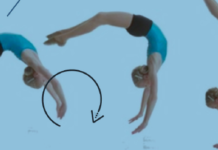“I make sure to take ice baths after every soccer game, especially during tournaments and after intense workouts. It helps my muscles recover faster, and I don’t feel as sore the next day. After ice baths I feel like I’m ready to go again,” says Carly, a 16-year-old student and athlete at a private all-girl school in the St. Louis area. Carly supports the idea of ice baths, but many others may not agree about that they have positive effects. 
According to some experts, ice baths are ineffective, and may even backfire. Some say future performance after ice baths is affected in bad ways, and that ice baths do not reduce soreness at all.
According to WebMD, athletes who go through intense workouts, such as running and lifting weights, may take ice baths to reduce inflammation and soreness of muscles, and to improve future performances. Typically, ice baths are less than 59 °F. Staying in an ice bath for five minutes or longer is effective, but staying in for ten minutes or more works the best. The icy water usually rises to the waist. Athletes mainly take ice baths in spas and in bathtubs at home.
Intense workouts really work your muscles, creating tears in muscle fiber. The damage helps build muscle because the muscles are actually working to repair themselves by growing more cells. This process is called muscle hypertrophy, which makes muscles bigger and stronger.
Studies done at the University of New Hampshire and published in August of 2013 show that ice baths prove to be ineffective. The experiment included 20 fit, college men running downhill for 40 minutes. Post workout, 10 of the men took ice baths that were each 20 minutes long. The temperature of the water was set to 40 °F, and the water reached to their waists. The next day, researchers tested blood for inflammation, and measured thighs and soreness. The researchers concluded that ice baths are painful, not helpful, and not worth the time.
However, researchers at the University of Ulster in Ireland seem to disagree. When they interviewed athletes, it was said that ice baths decrease inflammation in muscles. Their experiment, published in February of 2013, involved 366 individuals, ranging from 16 to 29 years old, who participated in cycling, lifting weights or running. Many took ice baths after their workouts, and the study showed that soreness of muscles was decreased at 24, 48, 72 and 96 hours. Researchers tested the participants’ soreness by taking blood samples and using them to look at inflammation and muscle damage. Results showed that ice baths reduced soreness by about 20%. The researchers are not sure if ice baths work better than ibuprofen, but taking an ice bath is better than nothing, they say.
According to a January, 2011, ESPN news article, ice baths are life savers. Kristi Kingma, a guard for the University of Washington’s Women’s Basketball team, wrote that she is required to take an ice bath after every game. She claims that ice baths are painstakingly cold and brutal, and that after she takes an ice bath, she stays shivering for the rest of the day. Although she doesn’t like them, Kingma states that ice baths reduce the muscle soreness in her legs and allow her to recover before the next big game. They reduce the swelling in her knees, and even help protect against future injuries. According to Kingma, ice baths allow the players to stay in the game for a few more minutes while maintaining high energy levels. Not only does she love the results, but she even recommends other athletes to take ice baths as well.
“Each athlete is unique and must be treated as an individual, not a soccer player or runner,” says Mike Lacavich, an athletic trainer at a private school in the Saint Louis area, who believes that ice baths relieve inflammation and overall soreness. “The injury should be addressed with a specific protocol if ice baths are determined to be implemented.” If the criteria is followed and the athlete is compliant with the ice bath protocol, it can be very helpful with reducing inflammation and muscle soreness.” He also says that ice baths must be timed and kept at a specific temperature, depending on the athlete’s injury. According to Lacavich, ice baths are treatment for an injury; they are not usually used as a preventative.
| Related stories: Kinesiotape–Healing Mechanism or Fashion Statement; Can Coffee Reduce Exercise Pains? |
Several high school athletes interviewed for this story stated that ice baths are very effective. Regan, a 16-year-old volleyball athlete, takes ice baths after the second day of tournaments. “After taking the ice bath on the second night of my tournaments, I am able to play the next day just as hard as I can the first day without feeling any soreness.”
Another athlete, Hope, insists, “Ice baths work so much better for muscles than ibuprofen because they soothe the muscles and take the pain away. I use ibuprofen for headaches, but ice baths are the way to go for muscle soreness.”
Carly testifies that they help: “I don’t know how I would get through long tournaments without ice baths to help my muscle soreness.”
Annie Purcell

This work is licensed under a Creative Commons Attribution-NonCommercial-NoDerivs 3.0 Unported License












